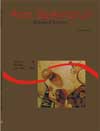<em>Prosthenhystera obesa</em> (Digenea), parasita de <em>Salminus maxillosus</em> (Characidae) da planície de inundação alto rio Paraná, Brasil: influência do tamanho e do sexo do hospedeiro
Resumo
Foram analisados 126 espécimes de Salminus maxillosus Valenciennes, 1849, coletados na planície de inundação do alto rio Paraná em ambiente lótico, representado pelos rios Paraná, Ivinheima e canal Cortado e semi-lótico, representado pelo rio Baía. Para a captura dos hospedeiros utilizaram-se redes de espera de malhagens variadas. Os parasitas foram comprimidos e fixados em AFA (álcool, formalina, ácido acético), corados em carmalúmen de Mayer, desidratados em sequência alcoólica, clarificados em creosoto e montados em bálsamo do Canadá. Prosthenhystera obesa Diesing, 1850 apresentou prevalência de 14,3% e intensidade média de infecção de 1,75 (amplitude: 1-3). A prevalência de P. obesa não apresentou correlação com o comprimento-padrão do hospedeiro, o que poderia indicar homogeneidade no comportamento de S. maxillosus durante parte de seu desenvolvimento. A intensidade de infecção está diretamente relacionada com o aumento no tamanho do hospedeiro. O sexo dos hospedeiros não influenciou o prevalência e a intensidade de infecção de P. obesa, sugerindo uma semelhança no comportamento em relação ao hábito alimentar e habitat de machos e fêmeas. Todos os hospedeiros parasitados foram capturados em ambiente lóticoDownloads
DECLARAÇÃO DE ORIGINALIDADE E DIREITOS AUTORAIS
Declaro que o presente artigo é original, não tendo sido submetido à publicação em qualquer outro periódico nacional ou internacional, quer seja em parte ou em sua totalidade.
Os direitos autorais pertencem exclusivamente aos autores. Os direitos de licenciamento utilizados pelo periódico é a licença Creative Commons Attribution 4.0 (CC BY 4.0): são permitidos o compartilhamento (cópia e distribuição do material em qualqer meio ou formato) e adaptação (remix, transformação e criação de material a partir do conteúdo assim licenciado para quaisquer fins, inclusive comerciais.
Recomenda-se a leitura desse link para maiores informações sobre o tema: fornecimento de créditos e referências de forma correta, entre outros detalhes cruciais para uso adequado do material licenciado.












1.png)




3.png)













